The NVIDIA GeForce GTX 980 Ti Review
by Ryan Smith on May 31, 2015 6:00 PM ESTNVIDIA's Computex Announcements & The Test
Alongside the launch of the GTX 980 Ti, NVIDIA is also taking advantage of Computex to make a couple of other major technology announcements. Given the scope of these announcements we’re covering these in separate articles, but we’ll quickly go over the high points here as they pertain to the GTX 980 Ti.
G-Sync Variable Overdrive & Windowed Mode G-Sync
NVIDIA is announcing a slew of G-Sync products/technologies today, the most important of which is Mobile G-Sync for laptops. However as part of that launch, NVIDIA is also finally confirming that all G-Sync products, including existing desktop G-Sync products, feature support for G-Sync variable overdrive. As the name implies, this is the ability to vary the amount of overdrive applied to a pixel based on a best-effort guess of when the next frame will arrive. This allows NVIDIA to continue to use pixel overdrive on G-Sync monitors to improve pixel response times and reduce ghosting, at a slight cost to color accuracy while in motion from errors in the frame time predictions.
Variable overdrive has been in G-Sync since the start, however until now NVIDIA has never confirmed its existence, with NVIDIA presumably keeping quiet about it for trade secret purposes. However now that displays supporting AMD’s Freesync implementation of DisplayPort Adaptive-Sync are out, NVIDIA is further clarifying how G-Sync works.
Meanwhile being freshly rolled out in NVIDIA’s latest drivers is support for Windowed Mode G-Sync. Before now, running a game in Windowed mode could cause stutters and tearing because once you are in Windowed mode, the image being output is composited by the Desktop Window Manager (DWM) in Windows. Even though a game might be outputting 200 frames per second, DWM will only refresh the image with its own timings. The off-screen buffer for applications can be updated many times before DWM updates the actual image on the display.
NVIDIA will now change this using their display driver, and when Windowed G-Sync is enabled, whichever window is the current active window will be the one that determines the refresh rate. That means if you have a game open, G-Sync can be leveraged to reduce screen tearing and stuttering, but if you then click on your email application, the refresh rate will switch back to whatever rate that application is using. Since this is not always going to be a perfect solution - without a fixed refresh rate, it's impossible to make every application perfectly line up with every other application - Windowed G-Sync can be enabled or disabled on a per-application basis, or just globally turned on or off.
GameWorks VR & Multi-Res Shading
Also being announced at Computex is a combination of new functionality and an overall rebranding for NVIDIA’s suite of VR technologies. First introduced alongside the GeForce GTX 980 in September as VR Direct, NVIDIA will be bringing their VR technologies in under the GameWorks umbrella of developer tools. The collection of technologies will now be called GameWorks VR, adding to the already significant collection of GameWorks tools and libraries.
On the feature front, the newly minted GameWorks VR will be getting a new feature dubbed Multi-Resolution Shading, or Multi-Res Shading for short. With multi-res shading, NVIDIA is looking to leverage the Maxwell 2 architecture’s Multi-Projection Acceleration in order to increase rendering efficiency and ultimately the overall performance of their GPUs in VR situations.
By reducing the resolution of video frames at the edges where there is already the most optical distortion/compression and the human eye is less sensitive, NVIDIA says that using multi-res shading can result in a 1.3x to 2x increase in pixel shader performance without noticeably compromising the image quality. Like many of the other technologies in the GameWorks VR toolkit this is an implementation of a suggested VR practice, however in NVIDIA’s case the company believes they have a significant technological advantage in implementing it thanks to multi-projection acceleration. With MPA to bring down the rendering cost of this feature, NVIDIA’s hardware can better take advantage of the performance advantages of this rendering approach, essentially making it an even more efficient method of VR rendering.
Getting Behind DirectX Feature Level 12_1
Finally, though not an outright announcement per-se, from a marketing perspective we should expect to see NVIDIA further promote their current technological lead in rendering features. The Maxwell 2 architecture is currently the only architecture to support DirectX feature level 12_1, and with DirectX 12 games due a bit later this year, NVIDIA sees that as an advantage to press.
For promotional purposes NVIDIA has put together a chart listing the different tiers of feature levels for DirectX 12, and to their credit this is a simple but elegant layout of the current feature level situation. The bulk of the advanced DirectX 12 features we saw Microsoft present at the GTX 980 launch are part of feature level 12_1, while the rest, and other functionality not fully exploited under DirectX 11 are part of the 12_0 feature level. The one exception to this is volume tiled resources, which is not part of either feature level and instead is part of a separate feature list for tiled resources that can be implemented at either feature level.
The Test
The press drivers for the launch of the GTX 980 Ti are release 352.90, which other than formally adding support for the new card is otherwise identical to the standing 352.86 drivers.
| CPU: | Intel Core i7-4960X @ 4.2GHz |
| Motherboard: | ASRock Fatal1ty X79 Professional |
| Power Supply: | Corsair AX1200i |
| Hard Disk: | Samsung SSD 840 EVO (750GB) |
| Memory: | G.Skill RipjawZ DDR3-1866 4 x 8GB (9-10-9-26) |
| Case: | NZXT Phantom 630 Windowed Edition |
| Monitor: | Asus PQ321 |
| Video Cards: | AMD Radeon R9 295X2 AMD Radeon R9 290X AMD Radeon HD 7970 NVIDIA GeForce GTX Titan X NVIDIA GeForce GTX 980 Ti NVIDIA GeForce GTX 980 NVIDIA GeForce GTX 780 Ti NVIDIA GeForce GTX 780 NVIDIA GeForce GTX 680 NVIDIA GeForce GTX 580 |
| Video Drivers: | NVIDIA Release 352.90 Beta AMD Catalyst Cat 15.5 Beta |
| OS: | Windows 8.1 Pro |


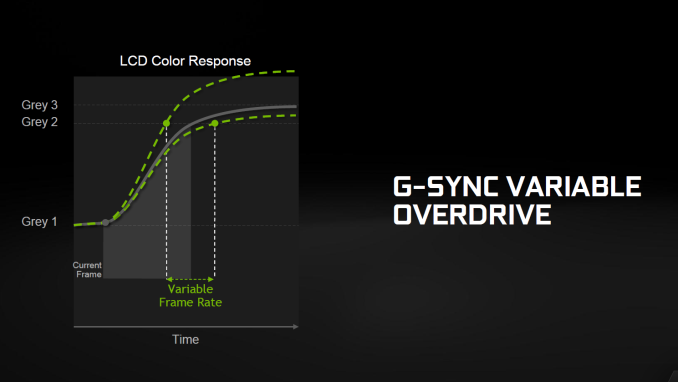
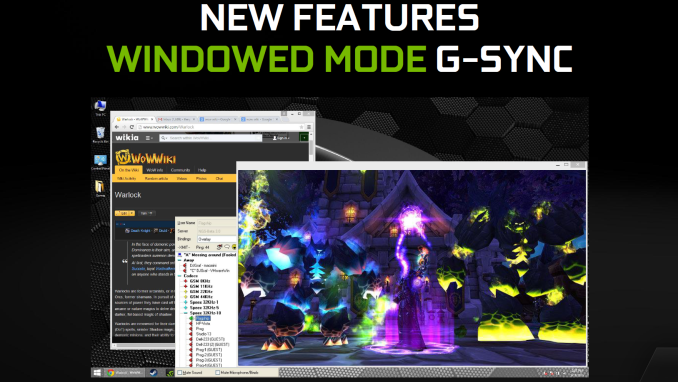
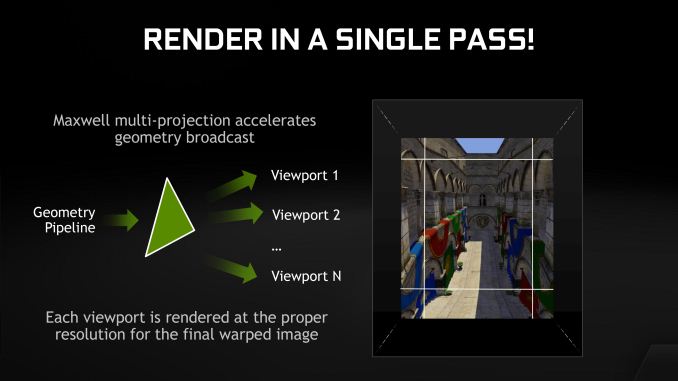
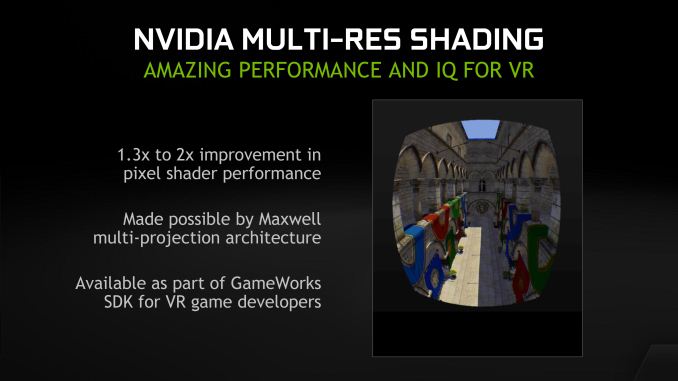
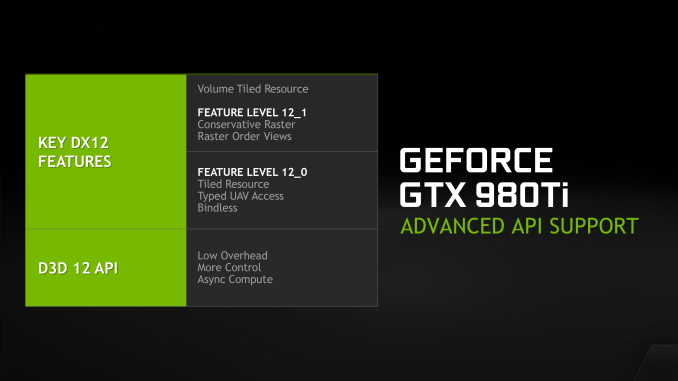








290 Comments
View All Comments
kyuu - Monday, June 1, 2015 - link
Witcher 3 runs just fine on my single 290. Is it just the xfire profile? Do you have the new driver and latest patches? Also, have you turned down tesselation or turned off hairworks?PEJUman - Monday, June 1, 2015 - link
4K... was hoping my U28D590D will have freesync, but alas... no such luck. I am very sensitive to stutter, it gives me motion sickness, to the point I have to stop playing :(limiting hairworks to 8x does help, but I really dislike the hair without it. I rather wait for 15.5.1 or 15.6. I have other games to keep me busy for a while.
I can get 45 avg if I drop to 21:9 ratio using 2840 x 1646, but even then I still get motion sickness from the occasional drops.
chizow - Monday, June 1, 2015 - link
Yes CrossFire support of TW3 is broken from Day1, its a well-known issue. AMD hastily released a driver last week with a CF profile, but its virtually unusable as it introduces a number of other issues with AA and flickering icons.PEJUman - Monday, June 1, 2015 - link
15.5 no longer flickers with or without AA. still slow though.chizow - Monday, June 1, 2015 - link
Are you sure? Did they release a follow-up to the 15.5 Beta? Because the notes and independent user feedback stated there was still flickering:*The Witcher 3: Wild Hunt - To enable the best performance and experience in Crossfire, users must disable Anti-Aliasing from the games video-post processing options. Some random flickering may occur when using Crossfire. If the issue is affecting the game experience, as a work around we suggest disabling Crossfire while we continue to work with CD Projekt Red to resolve this issue
Peichen - Monday, June 1, 2015 - link
295X2 is indeed faster but it also uses twice as much power. You have to take the 1000W PSU into account as well as one or two additional 120mm fans that's needed to get the heat out the case. When you add up all the extra cost for PSU, fans, electricity, noise and stutter against an overclocked 980Ti (last few pages of review), the slight speed advantage aren't going to be worth it.Also, Maxwell 2 supports DirectX 12, I am not so sure about any of the current AMD/ATI cards since they were designed in 2013.
xthetenth - Monday, June 1, 2015 - link
You don't have to buy a new PSU every time you buy a high TDP card, but otherwise a valid point. Going multi-GPU for the same performance requires a much bigger price difference to be worth it vs. a single card.Kutark - Monday, June 1, 2015 - link
Basically you're gonna spend an extra $5/mo on electricity with that card, or $60/yr vs a 980ti. thats actually pretty huge. Thats at 4hrs/day of gaming, at an average of 12c/kwh. If you game 6 or 7 hours a day, its even worse.These high power cards are a little ridiculous. 600w just for one video card?!!
Daroller - Monday, June 1, 2015 - link
I had a GTX690, and I run SLI TITAN X. Dual GPU IS a hindrance. You'd have to be blind, stupid, or a rabid fanboy to claim otherwise. The 295x2 isn't exempt from that just because you dislike NV and harbor a not so secret love for AMD.Daroller - Monday, June 1, 2015 - link
I had a GTX690, and I run SLI TITAN X. Dual GPU IS a hindrance. You'd have to be blind, stupid, or a rabid fanboy to claim otherwise. The 295x2 isn't exempt from that just because you dislike NV and harbor a not so secret love for AMD.